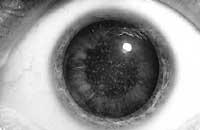What controls the biological clock and ninia movements?
Thanks to a recent research, it is better understood how it adapts to light both the circadian rhythm and the closing movements of the ninia. This research, promoted by the United States Eye Institute and the Howard Hughes Institute of Medicine, has been published in the journal Science.

According to researchers, melanopsin protein is related to light detection, but not to the process of image formation. To study the role of cells containing this protein, we have worked with transgenic mice without melanopine. It seems that cells with melanopine form a network in the retina that allows to know the light and duration of it.
On the contrary, vision-related cells detect limits between light and dark. In addition, the importance of melanopsin has been evident, since transgenic mice had a great difficulty following the day-night natural cycle, which caused serious damage.
Buletina
Bidali zure helbide elektronikoa eta jaso asteroko buletina zure sarrera-ontzian











